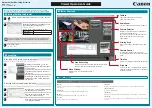
•
A static translation created with the
ip nat outside source static
command enables
any inside host to contact the outside host by using the outside local address of the
outside host. A static translation can be used by traffic that is initiated in either direction.
•
Example 1—Simple address translation
host (config) #
ip nat outside source static 171.69.68.10 10.1.2.3
•
Example 2—Extended address/port translation
host (config) #
ip nat outside source static tcp 171.69.68.10 56 10.1.2.3 24
•
Use the
no
version to remove the static translation and purge the associated translations
from the translation table.
•
See ip nat outside source static.
Defining Dynamic Translations
Dynamic translations use access list rules, to determine whether or not to apply NAT to
incoming traffic, and NAT address pools, from which a NAT translation can allocate IP
addresses. You use dynamic translation when you want the NAT router to initiate and
manage address translation and session flows between address realms on demand.
To configure dynamic translations:
•
Define any access list rules that the NAT router uses to decide which packets need
translation.
•
Define an address pool from which the NAT router obtains addresses.
•
Define inside and outside source translation rules for the NAT router to create NAT
translations.
•
Mark interfaces as
inside
or
outside
.
•
(Optional) Modify any translation timeout values.
Creating Access List Rules
Before you create a dynamic translation, create the access list rules that you plan to
apply to the translation. For information about configuring access lists, see “Configuring
Routing Policy” on page 3.
The router evaluates multiple commands for the same access list in the order they were
created. An undefined access list implicitly contains a rule to
permit any
. A defined access
list implicitly ends with a rule to
deny any
.
NOTE:
The access lists do not filter any packets; they determine whether the packet
requires translation.
You use the
access-list
command to create an access list.
access-list
71
Copyright © 2010, Juniper Networks, Inc.
Chapter 2: Configuring NAT
Содержание JUNOSE 11.2.X IP SERVICES
Страница 6: ...Copyright 2010 Juniper Networks Inc vi...
Страница 8: ...Copyright 2010 Juniper Networks Inc viii JunosE 11 2 x IP Services Configuration Guide...
Страница 18: ...Copyright 2010 Juniper Networks Inc xviii JunosE 11 2 x IP Services Configuration Guide...
Страница 22: ...Copyright 2010 Juniper Networks Inc xxii JunosE 11 2 x IP Services Configuration Guide...
Страница 28: ...Copyright 2010 Juniper Networks Inc 2 JunosE 11 2 x IP Services Configuration Guide...
Страница 116: ...Copyright 2010 Juniper Networks Inc 90 JunosE 11 2 x IP Services Configuration Guide...
Страница 144: ...Copyright 2010 Juniper Networks Inc 118 JunosE 11 2 x IP Services Configuration Guide...
Страница 230: ...Copyright 2010 Juniper Networks Inc 204 JunosE 11 2 x IP Services Configuration Guide...
Страница 262: ...Copyright 2010 Juniper Networks Inc 236 JunosE 11 2 x IP Services Configuration Guide...
Страница 294: ...Copyright 2010 Juniper Networks Inc 268 JunosE 11 2 x IP Services Configuration Guide...
Страница 328: ...Copyright 2010 Juniper Networks Inc 302 JunosE 11 2 x IP Services Configuration Guide...
Страница 345: ...PART 2 Index Index on page 321 319 Copyright 2010 Juniper Networks Inc...
Страница 346: ...Copyright 2010 Juniper Networks Inc 320 JunosE 11 2 x IP Services Configuration Guide...
Страница 356: ...Copyright 2010 Juniper Networks Inc 330 JunosE 11 2 x IP Services Configuration Guide...
















































